There’s a certain portion of the comics audience (and also, to be honest, the editorial contingent) who have fallen prey to the theory that comics need to be “realistic”, that suspension of disbelief is broken if we don’t know where Batman buys his tights or the actual scientific explanation behind Daredevil’s radar sense…
Then in the 80s, Doctor Doom and Iron Man went back in time to fight alongside King Arthur and the Knights of the Round Table. Your Major Spoilers (retro) review of Iron Man #150 awaits!
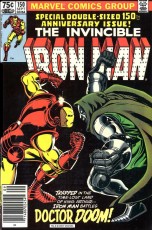 IRON MAN #150
IRON MAN #150
Writer: Bob Layton/David Michelinie
Artist: John Romita, Jr./Bob Layton
Colorist: Bob Sharen
Letterer: Joe Rosen
Editor: Jim Salicrup
Publisher: Marvel Comics
Cover Price: 75 Cents
Current Near-Mint Pricing: $12.00
Previously in Iron Man: After being deposed as the iron-fisted dictator of Latveria due partly to the machinations of the Fantastic Four, Doctor Doom was not in the best of spirits. When the Golden Avenger known as Iron Man ended up on his doorstep (having tracked an illicit shipment of his own Stark technology to Doom) there was naturally some animosity. Going mano-a-steel-jacketed-mano, the two men stumbled onto Doctor Doom’s time platform, and were flung headlong through the timestream…
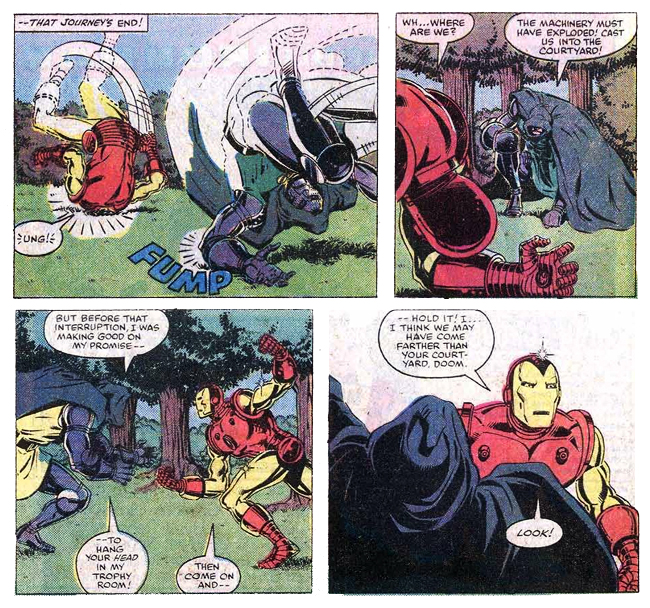
I really enjoy Bob Layton’s art, especially when it comes to classic Iron Man, and his work around this time is some of the most consistent work he has done for major publishers (although this issue is marred somewhat by the mechanical color separations of the day.) Expecting to have landed in the courtyard of Doom’s castle, hero and villain both freeze, turning to see the glorious edifice of Camelot (“It’s only a model”), trying to piece together what has happened, and why they’re no longer in the throne room of Latveria…
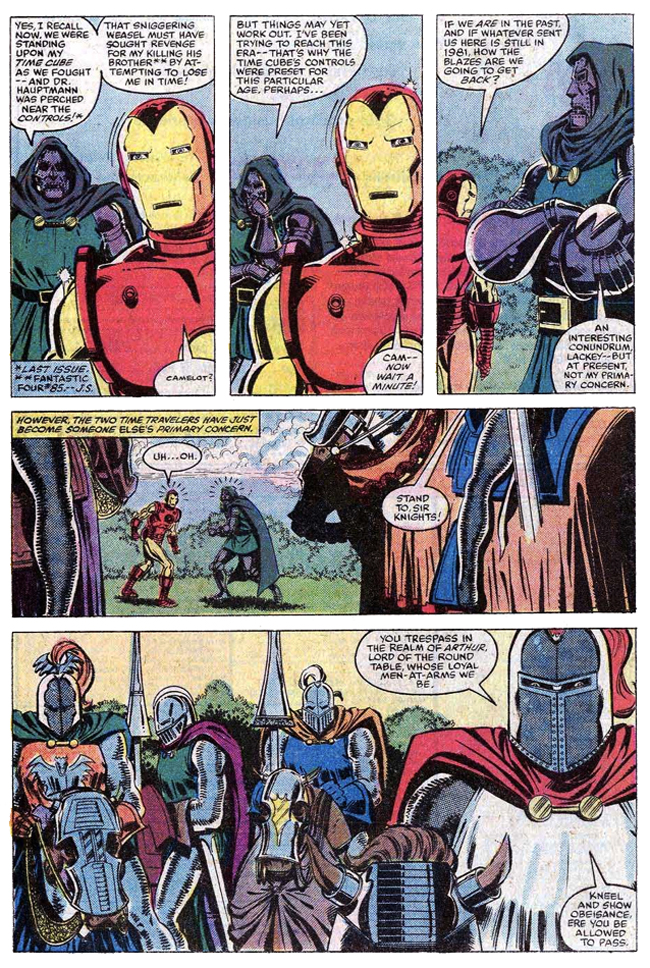
The Knights order their captives to kneel, but Doctor Doom isn’t particularly interested in complying, and when they try to force him, he immediately launches into a show of force. Iron Man manages to get the not-so-good Doctor under control, reminding him that they are out of their element, and they allow the knights to take them into custody, bringing them to their liege, whose name is exactly what you expect it to be…
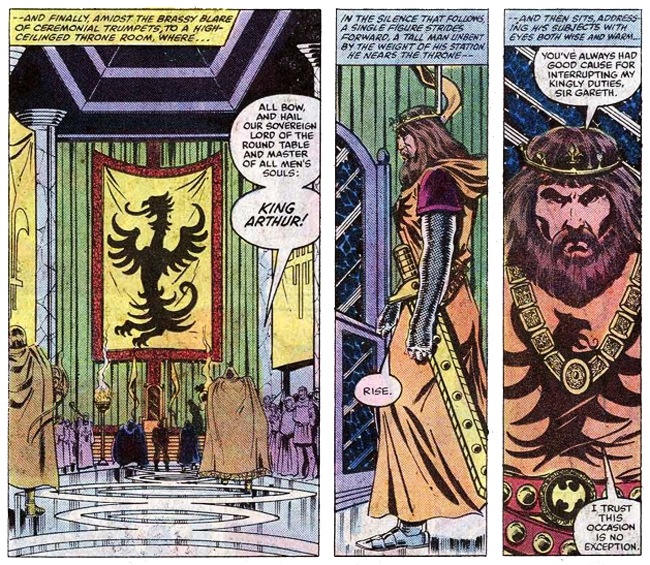
Iron Man makes his case through quick-thinking, using his armor’s abilities to lift Arthur’s throne into the air via magnetic force, proving himself to have powers beyond their understanding. Doom, however, merely shows off the royal seal of Latveria, calling upon Arthur to treat him as a fellow sovereign. Arthur informs them that both men can be his guest while he assesses their situation (as both men are suspected of being mystical pawns of Morgana LeFey, sent to destroy Camelot), provided they don’t try to leave the castle without permission. It’s interesting to see how much the character of Tony Stark has changed since this issue hit the stands 35 years ago, as he assesses his situation…

Well, not EVERYTHING is different, I suppose. Still, the idea of today’s Tony Stark doubting himself even for a moment seems unlikely, something which might inform me seemingly-endless whining about Iron Man in the 21st Century. As for Victor Von Doom, he too has a visitor come to his quarters in the night…
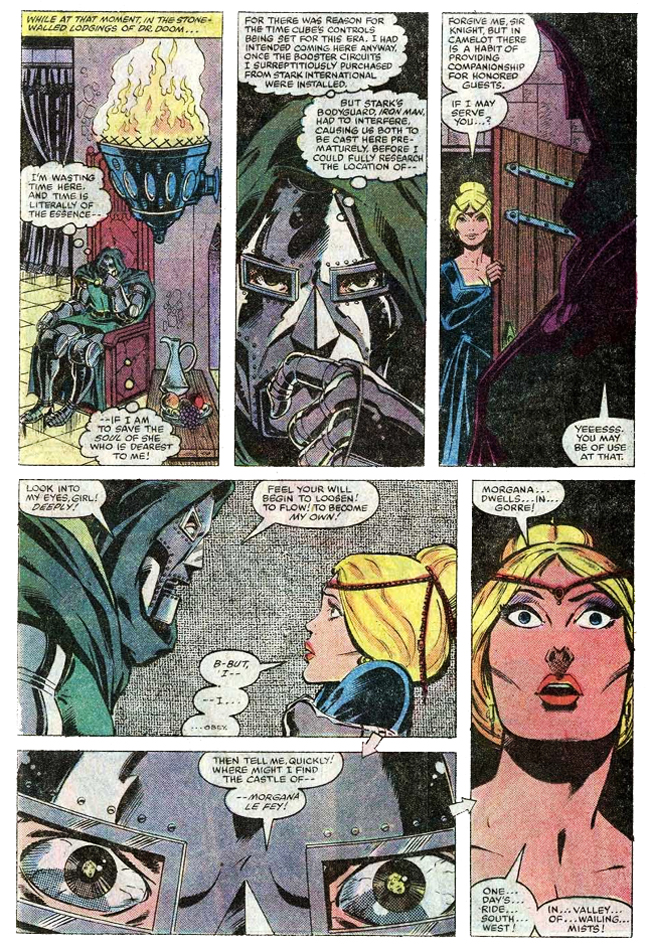
…with slightly different results. I am a bit surprised with the undertones of these two scenes, and the barely subdued sexual politics inherent in each. The idea of Iron Man spending the night with a random castle courtesan seems unlikely in modern portrayals, but Doom’s hypnotic will is even creepier. Luckily, he isn’t after anything other than the location of the one woman who might aid him in getting home, Arthur’s maybe sorta half-sibling depending on the canon you read, Morgana herself.
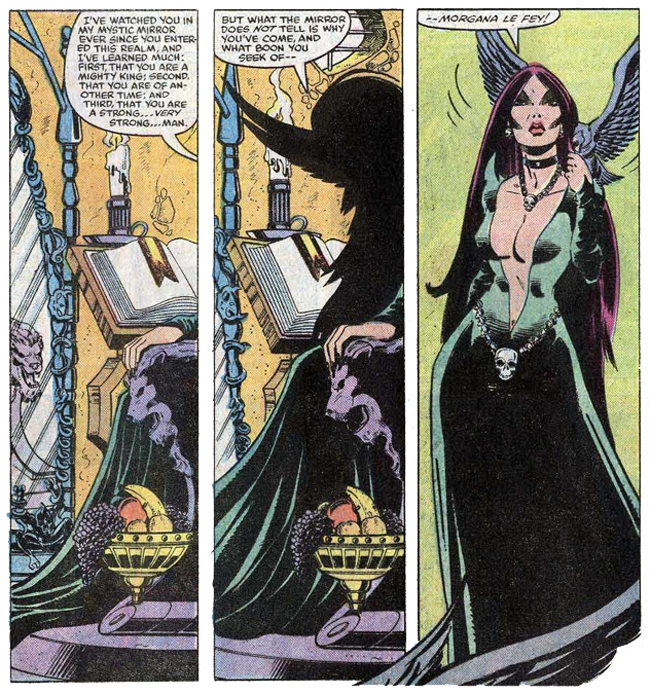
The next morning, Arthur greets Iron Man, revealing that doom has fled in the night, and explaining the nature of his animosity with Morgana (a moment that reads a bit oddly, given modern interpretations of Iron Man as an aficionado of Arthur and knightly tales). Unfortunately, both our hero and the legendary king are in for the shock of their lives, as Morgana agrees to help Doom get home only if he helps her to once and for all kill her brother. Thus, as another day dawns in Camelot…

Arthur’s knights clash with the army of undead, while Doctor Doom and Iron Man match their respective armors against one another, neither able to use their full power due to having no easy way to recharge their armor’s power cells, but Iron Man finds the odds against them too high, as Doom’s army of revenants rises again after Arthur’s knights strike ’em down. Then, Tony Stark has a realization…

Battling Morgana, Iron Man finds himself repeating one of his mantras (“I hate magic”) but his technology proves strong enough to counter her spells, causing Morgana to retreat, but leaving him at the mercy of Doctor Doom. Doom swears that he will murder “the lackey” (at this point in time, Iron Man is publicly believed to be Tony Stark’s hired bodyguard, remember) but that his revenge will have to wait…
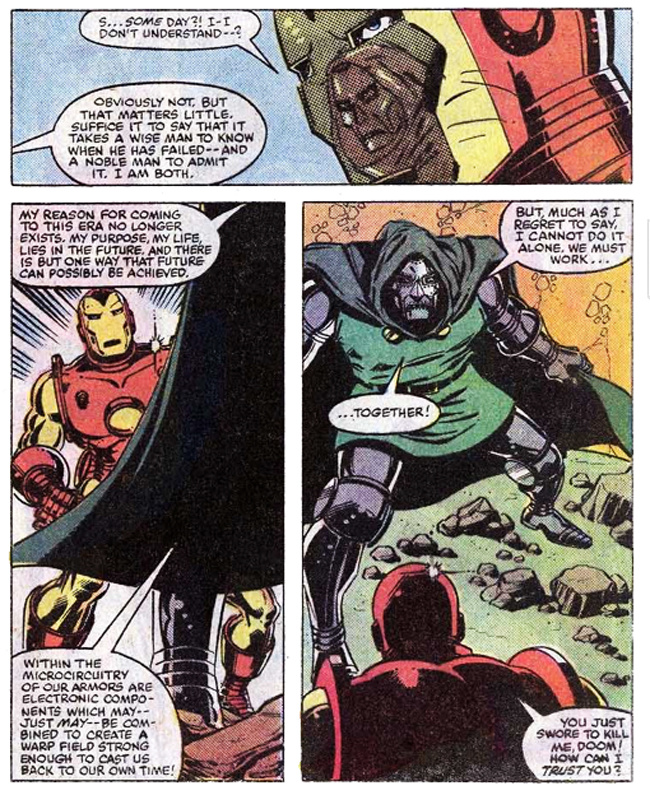
“Because, Avenger… You have my word.” Considering the situation, Iron Man realizes that Doom is correct, that only by cooperation can the two of them have any chance of making the metaphorical leap home…
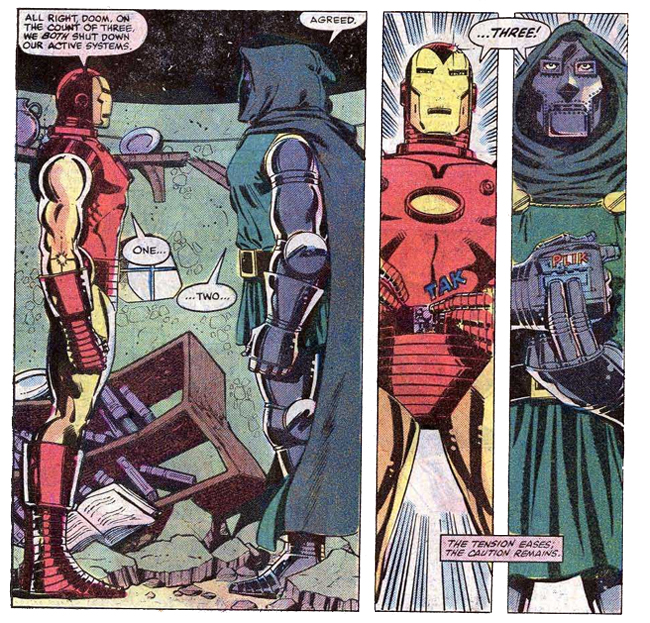
I really love that particular moment, a point in Marvel history where two equally powerful characters are forced to work together, each of them respectful of the others’ skills and powers without diminishing the fact that they couldn’t trust each other, two very intelligent, very resourceful men forced to work together to survive…
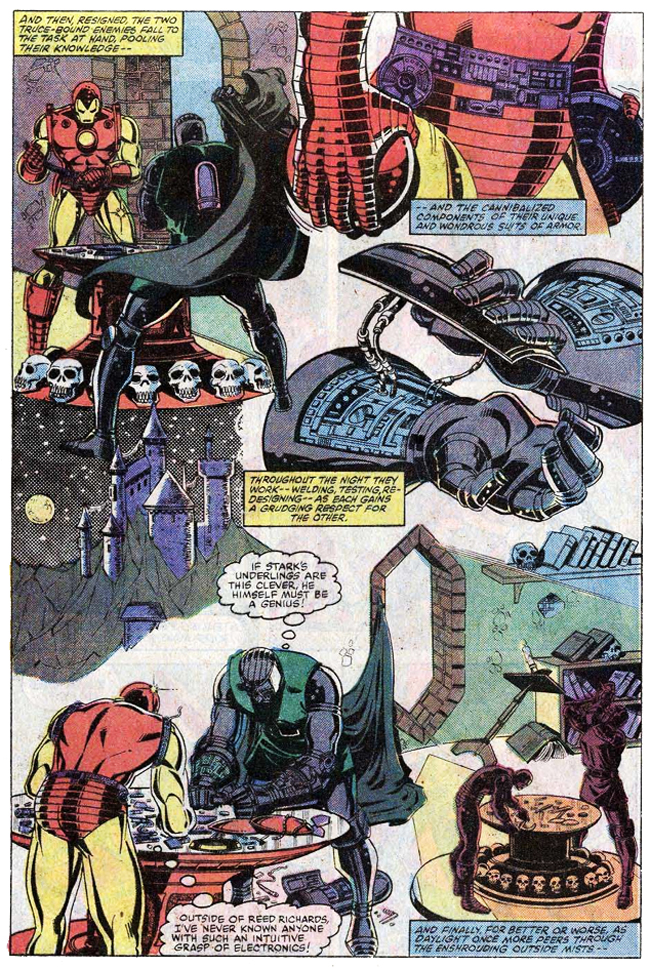
Is it stretching the bounds of the story to believe that they could cannibalize the part of their armors to recreate Doom’s time machine? Possibly, but the storytelling is smooth enough that you can work past it (also, the story featured King Arthur’s knights fighting a legion of zombies, so… y’know. Priorities.) The armored warriors agree to land in neutral territory, and to extend their truce for 24 hours after they make it home…
…IF they make it home.

And then… they walk home. It’s a pretty neat ending, and one that gets called back a number of times in the ensuing years, as well as getting a direct sequel some 100 issues afterwards. The best part of the story for me comes in the unspoken amazement that Stark and Doom have for each other’s technical wizardry, a subtle moment that works within the context of the story being told and leaves our two heroes on equal terms at the end of the tale. Most impressively, the story takes our hero entirely out of his element, allowing him to feel discomfort at the situation, whereas today’s Iron Man would probably cockily explain how he has a subroutine created for just such an emergency. In short, Iron Man #150 puts our hero through the wringer, throwing in everything but the kitchen sink, but keeping the characters grounded enough to involve me in the tale, earning a very impressive 3.5 out of 5 stars overall. It’s kind of a shame that ‘Demon In A Bottle’ so overshadows this story, because it’s some of my favorite Iron Man of the period…



